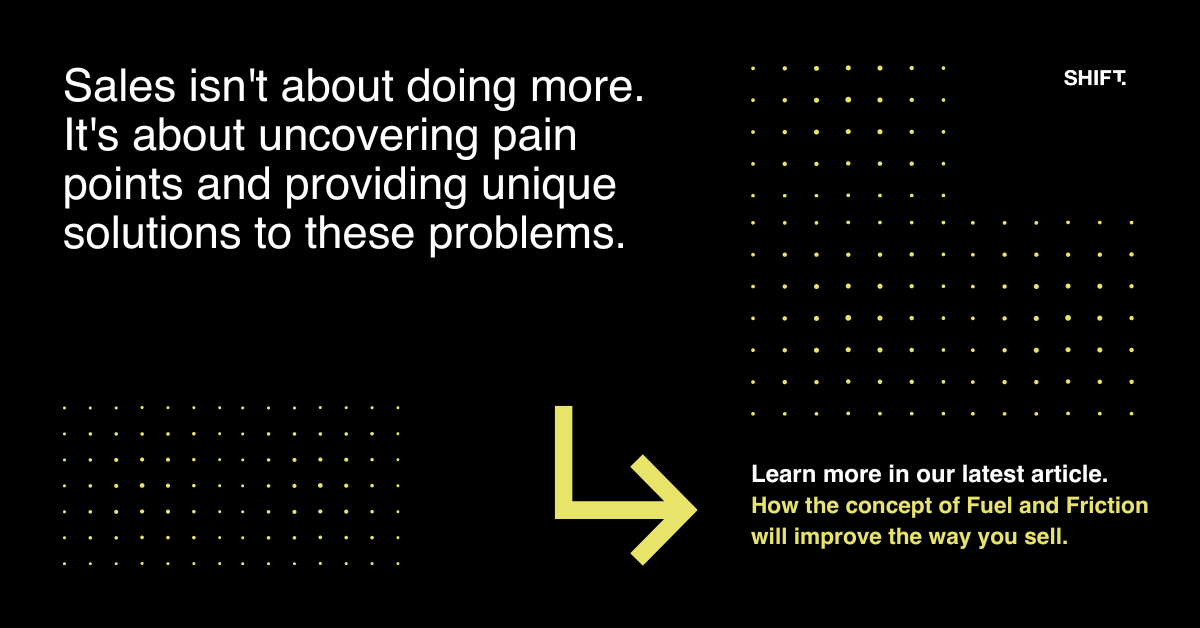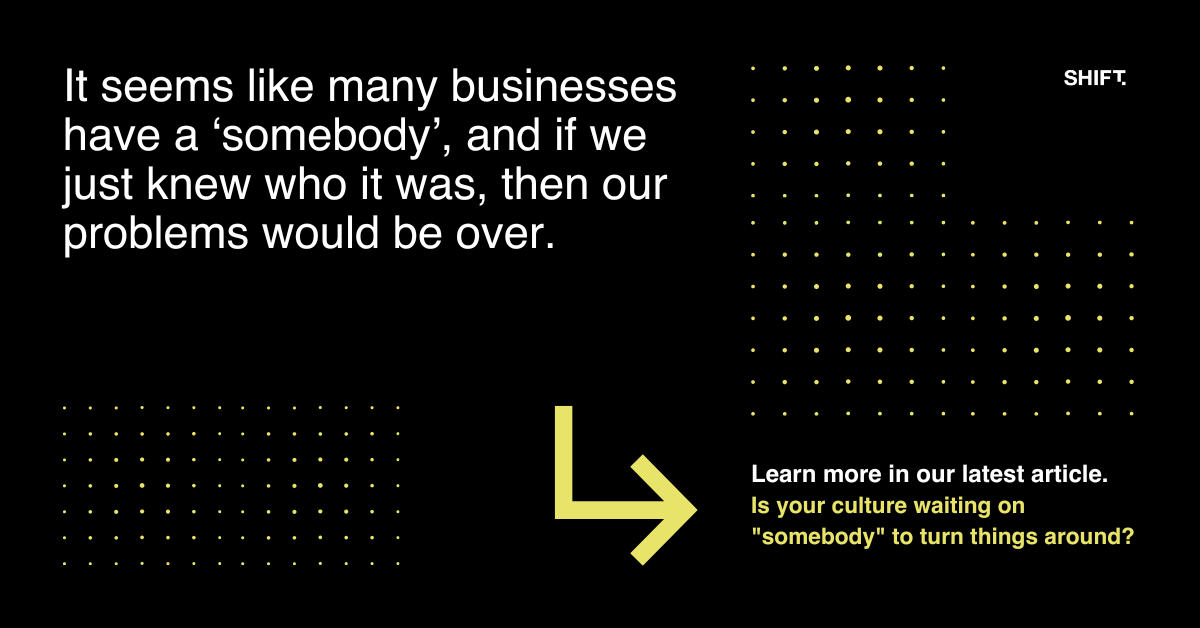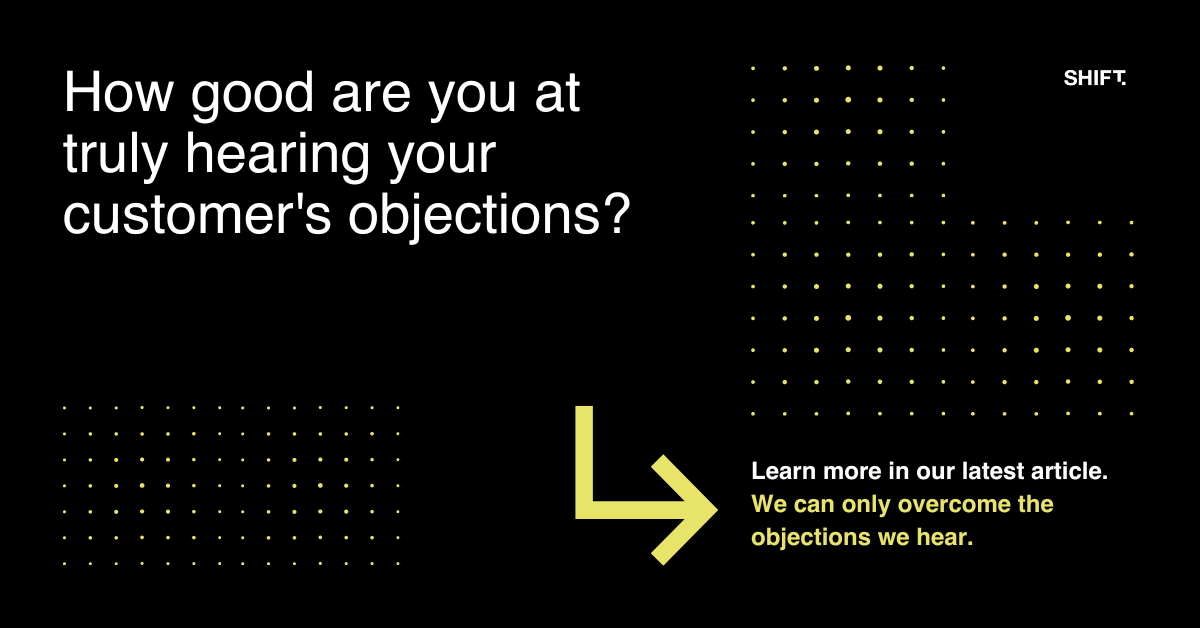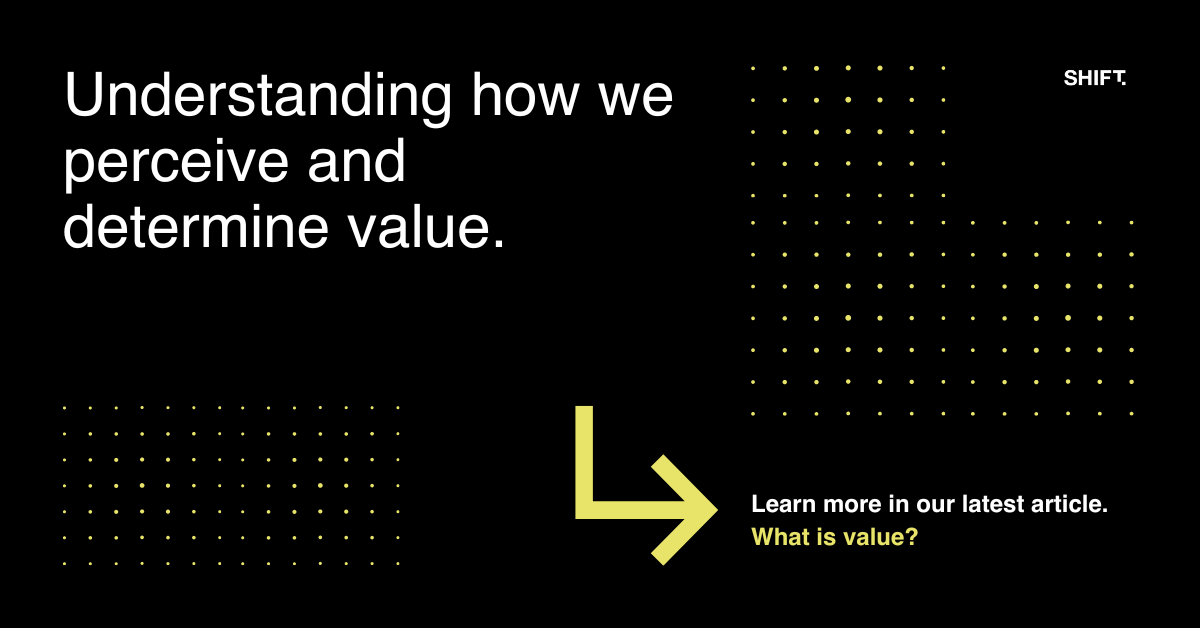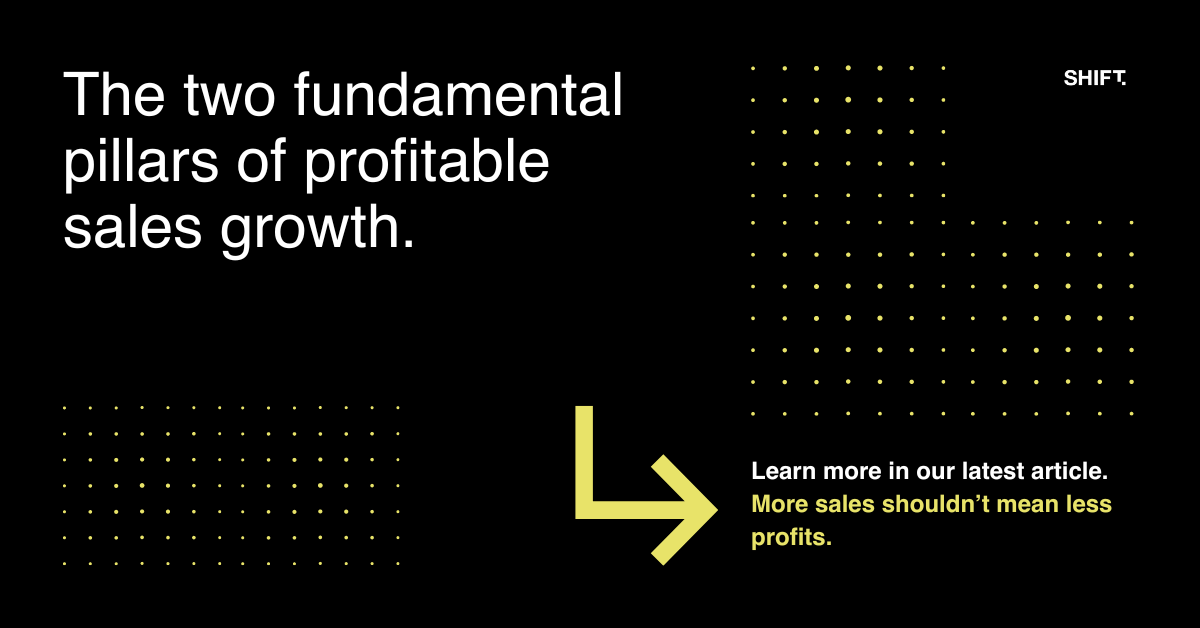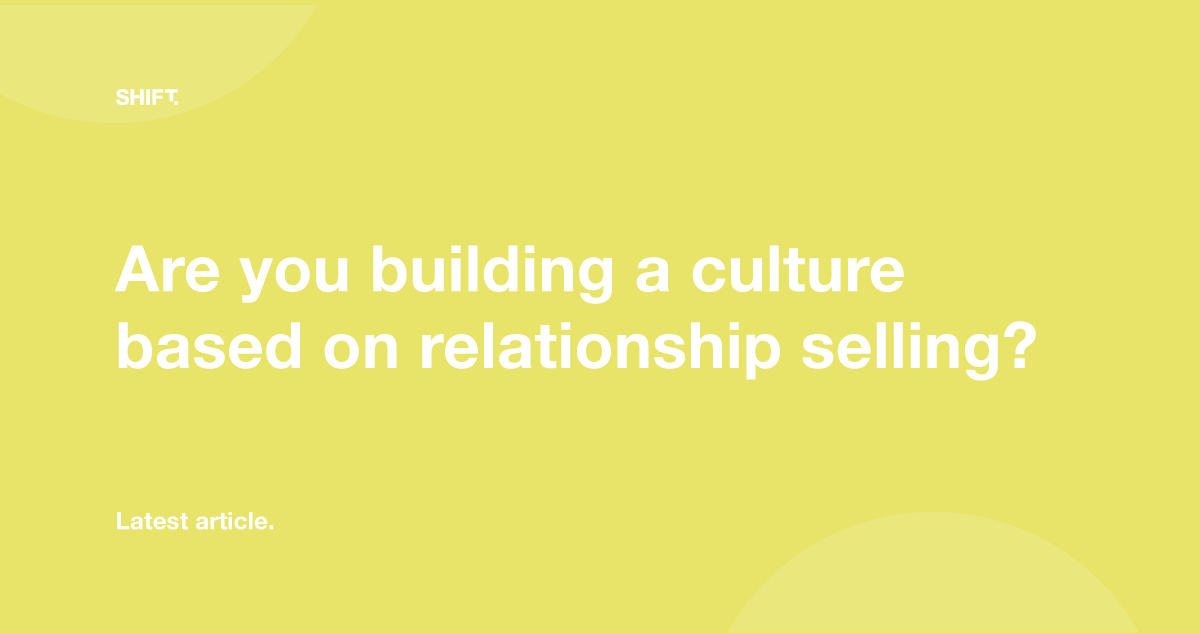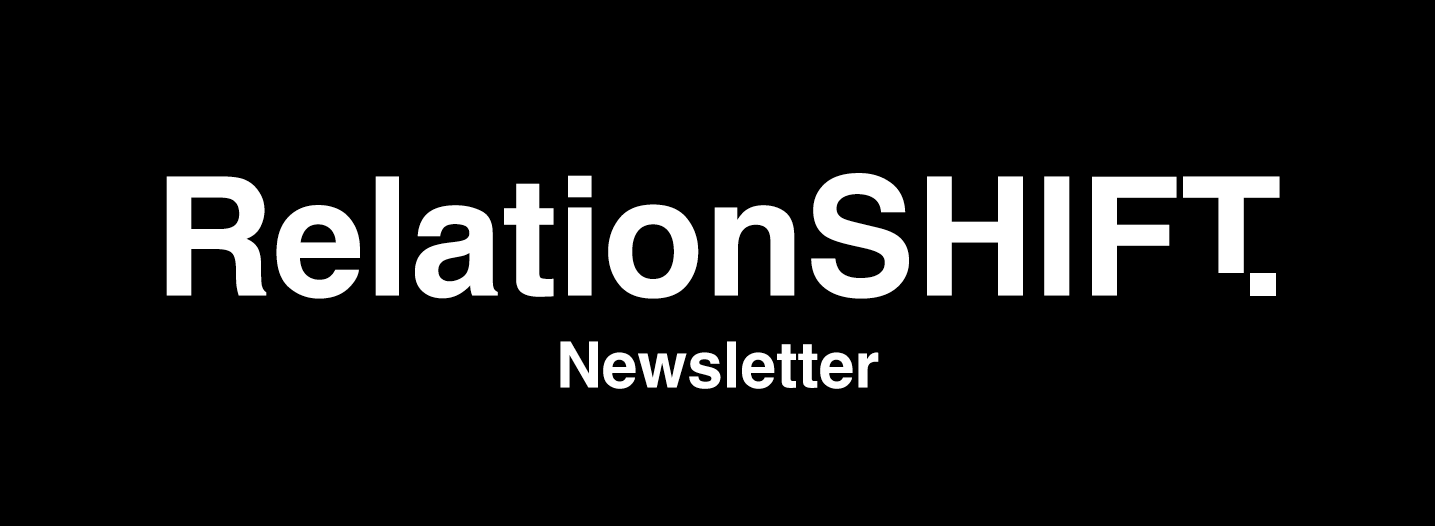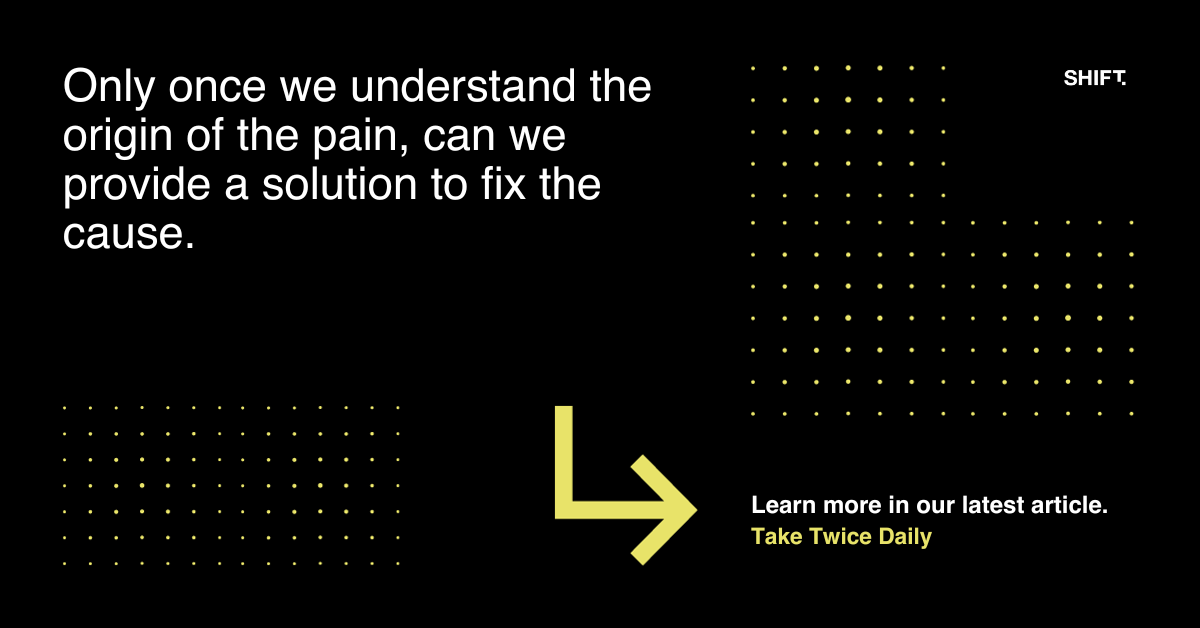Firstly, there is room for both types of selling. Both work. One will work better than the other depending on the circumstances, what you are selling, and the markets you are playing in. The big difference between the two is that transactional selling is generally short-term and not sustainable, whereas relationship selling is generally long-term and sustainable.
So, what do the two types of selling look like?
The Transactional Salesperson – This salesperson’s primary objective is to get the sale and move on. Products are sold very early in the process, and these salespeople are likely to believe that price is a key factor in why customers buy. They believe that they win sales because of their ability, but when they lose a sale, it is not their attitude or issue to blame, it’s the customers’.
The Relationship Salesperson – This salesperson understands the customer and knows how their whole offer - not just the product - adds value to the customer's business. Their objective is to win the customer, not the sale. This salesperson understands that price is not the key reason why customers buy.
The mantra for a transactional salesperson might be something like
“I believe in the ‘ABC’ of selling - Always Be Closing”
The mantra for a relationship salesperson might be something like “I don’t close the sale; I open a new relationship”
You are likely to experience transactional salespeople in full flight when:
- you get a random phone call with someone trying to sell you something
- you are buying a car from a slick and greasy salesperson
- you are buying an appliance or furniture and the salesperson is wanting you to make a quick decision, without offering anything of value, just the price.
In these situations, a transactional salesperson is quite easy to pick. When we experience these situations, as a customer, we are generally underwhelmed by the attitude and service. And yet, we are often oblivious when we think we are a relationship salesperson, but have fallen into the transactional selling trap.
- When we try to sell our product before first building trust and finding the right solution for the customer, we move into the transactional selling trap.
- When we see our customer as a great big dollar sign, and then just drop them as soon as the sale is made, we move into the transactional selling process.
- When we price a project or large piece of work without really knowing anything about the project or the customer's pain points and hope to win the sale, we move into the transactional selling trap.
Any business that sells a product or service, wants to be in business for a long time, wants repeat customers and would love existing customers to refer them to others will be far more successful with relationship salespeople and a relationship sales culture.
What type of salesperson are you and do you want to be?
If you answered “a relationship salesperson” then I say to you that “What you believe drives your behaviour”.
Here are two mantras to help guide you on your path:
- Follow the customer; Not the sale
- I don’t close a sale; I open a new relationship
Happy Selling.
Andrew Nisbet
PS - My book, 'The Art Of Relationship Selling" which entails the lessons and principles I teach through Shift Perspectives is coming out soon. To register for an early copy, you can do so by following this link here.
